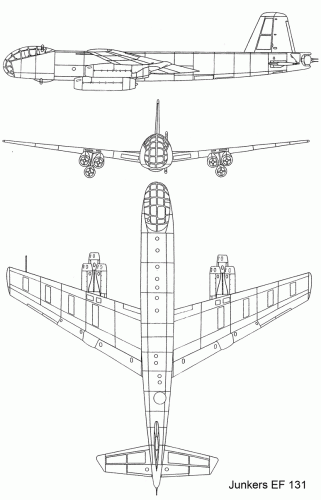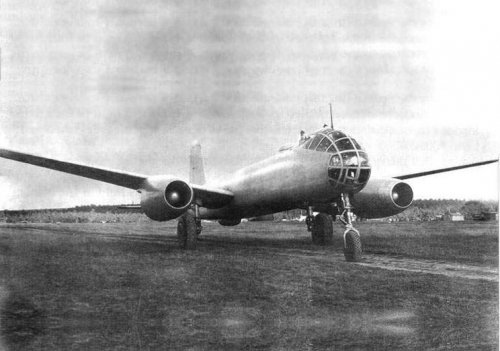- Joined
- 21 May 2006
- Messages
- 2,833
- Reaction score
- 1,917
G’day gents
For Christmas, I was fortunate enough to be given the book MiG: Fifty Years of Secret Aircraft Design – by R.A. Belyakov and J. Marmain, by a good mate, who appreciates my interest in aviation.
Whilst immersing myself into this fantastic simple but informative book, I have come across little bits and pieces I was not aware of (a sign of a good book!!). The book covers the stage/variant development of each MiG aircraft. Although I thought I knew something of the I-305/MiG-9 series (one of the Soviet’s 1st gen jet fighters). I was fascinated to discover the I-305/FL variant, a one-off MiG-9 airframe which was modified to take a single indigenous Lyulka TR-1 turbojet of 1,500 kg (3,300 lb) in place of the standard MiG-9’s pair of RD-20 (German BMW 003) turbojets. Sadly for the Soviet’s, at the end of 1947, when the I-305/FL was almost complete and ready to have the TR-1 engine fitted, the TR-1A then under development exploded whilst under testing. As a result of the failings of the TR-1A and the promising more technologically and vastly superior performing Lavochkin La-15 ‘Fantail’and Mikoyan-Guryevich I-310 S (MiG-15 ‘Fagot’), along with the stupidity and ignorance of the British government in supplying the Soviet’s with their state-of-the-art Rolls Royce Derwent V and Nene I & II turbojets. The I-305/FL (along with the Ilyushin IL-22 bomber) was discontinued.Now if I may, my question to the forum members is this-I hypothetically ask what if Britain and its politician’s at the time had more intelligence and foresight than they displayed in 1946. Say that they refused the request of the Soviet Union and do not handing over one of their greatest technologically advancements – the Rolls Royce turbojet engines (both Derwent and Nene designs). The Soviet aviation industry (and more importantly the Soviet military) would have been force to either persevere with the development of the RD-20 (German BMW 003) turbojets (perhaps coming up with something similar in line to the French and their SNECMA Atar – itself an afterburning development of the German BMW 003 turbojet) or and the continuation of the development of their own indigenous Lyulka TR-1 turbojet. (Note: In mid-1946, the Council of Ministers ordered the development of a MiG-9 with an 'afterburning' versions of the RD-20, based on the BMW 003S engine. These engines had a maximum power of 1,000–1,050 kgf (9.8–10.3 kN; 2,200–2,300 lbf) and were intended to increase the aircraft's speed to 920 km/h (570 mph) at sea level and 950 km/h (590 mph) at 5,000 meters (16,000 ft).(Note: the MiG bureau engineers left room in the redesign of the I-305/FL rear airframe for an afterburner then being developed for the TR-1 engine, that would boast the TR-1’s thrust to 2,000-2,500 kg (1,960-2,450 daN. (Does anyone know the designation of this engine??)
My question to the forum members is to apply your knowledge and experience in helping me obtain the following information:How long do you think it would have taken the Soviet’s to master the technical issues with the Lyulka TR-1turbojet?
Does the forum think it likely that an actual the Lyulka TR-1 I-301/FL would have entered operational service as an interim due to delays in fielding the Lyulka TR-1 powered MiG-15? If the Soviet’s were not afforded the luxury of a technological jump in turbojet knowledge of British turbojets, how do you think the MiG I-310 S (aka MiG-15) would have performed powered by the operational Lyulka TR-1 turbojet? Saying this can I ask the forum’s expertice to calculate the possible/likely performance of a Lyulka TR-1 turbojet powered MiG-15 ‘Fagot’? Could the MiG-15 been fitted with the proposed afterburner variant of the TA-1 under study (sorry I don’t know the designation of this model of the TR-1 or how far it got)? After all this was proven to be possible with the later MiG-17 ‘Fresco’ The information I have for the Lyulka TR-1 turbojet is as follows:- In May 1944 Lyulka was ordered to begin development of a turbojet with a thrust of 12.3 kN (2,800 lb). He demonstrated an eight-stage axial-flow engine in March 1945 called the S-18.- In early 1946 the Council of Ministers ordered that the S-18 be developed into an operational engine with a thrust of 15.5 kN (3,500 lb). The TR-1 was developed in early 1946 and had its first static run on 9 August. It was tested in the air on a pylon fitted to a B-25 Mitchell piston-engine bomber.- The TR-1 proved to have less thrust and a higher specific fuel consumption than designed.- Lyulka further developed the engine into the TR-1A of 20.5 kN of thrust, but its specific fuel consumption was very high and it too was cancelled.
Specifications of Lyulka TR-1
Weight: 885 kg (1,951 lb)
Maximum thrust (TR-1): 1,350kg(12.8 kN) (2,900 lb)
(TR-1A): 1,500 kg (3,300 lb)
Specific fuel consumption: 129 - 137 kg/kN·h (1.27-1.35 lb/lbf·h)
Thrust-to-weight ratio: 14.5 N/kg (1.47 lbf/lb)
Thanks for your time and consideration
Regards
Pioneer
For Christmas, I was fortunate enough to be given the book MiG: Fifty Years of Secret Aircraft Design – by R.A. Belyakov and J. Marmain, by a good mate, who appreciates my interest in aviation.
Whilst immersing myself into this fantastic simple but informative book, I have come across little bits and pieces I was not aware of (a sign of a good book!!). The book covers the stage/variant development of each MiG aircraft. Although I thought I knew something of the I-305/MiG-9 series (one of the Soviet’s 1st gen jet fighters). I was fascinated to discover the I-305/FL variant, a one-off MiG-9 airframe which was modified to take a single indigenous Lyulka TR-1 turbojet of 1,500 kg (3,300 lb) in place of the standard MiG-9’s pair of RD-20 (German BMW 003) turbojets. Sadly for the Soviet’s, at the end of 1947, when the I-305/FL was almost complete and ready to have the TR-1 engine fitted, the TR-1A then under development exploded whilst under testing. As a result of the failings of the TR-1A and the promising more technologically and vastly superior performing Lavochkin La-15 ‘Fantail’and Mikoyan-Guryevich I-310 S (MiG-15 ‘Fagot’), along with the stupidity and ignorance of the British government in supplying the Soviet’s with their state-of-the-art Rolls Royce Derwent V and Nene I & II turbojets. The I-305/FL (along with the Ilyushin IL-22 bomber) was discontinued.Now if I may, my question to the forum members is this-I hypothetically ask what if Britain and its politician’s at the time had more intelligence and foresight than they displayed in 1946. Say that they refused the request of the Soviet Union and do not handing over one of their greatest technologically advancements – the Rolls Royce turbojet engines (both Derwent and Nene designs). The Soviet aviation industry (and more importantly the Soviet military) would have been force to either persevere with the development of the RD-20 (German BMW 003) turbojets (perhaps coming up with something similar in line to the French and their SNECMA Atar – itself an afterburning development of the German BMW 003 turbojet) or and the continuation of the development of their own indigenous Lyulka TR-1 turbojet. (Note: In mid-1946, the Council of Ministers ordered the development of a MiG-9 with an 'afterburning' versions of the RD-20, based on the BMW 003S engine. These engines had a maximum power of 1,000–1,050 kgf (9.8–10.3 kN; 2,200–2,300 lbf) and were intended to increase the aircraft's speed to 920 km/h (570 mph) at sea level and 950 km/h (590 mph) at 5,000 meters (16,000 ft).(Note: the MiG bureau engineers left room in the redesign of the I-305/FL rear airframe for an afterburner then being developed for the TR-1 engine, that would boast the TR-1’s thrust to 2,000-2,500 kg (1,960-2,450 daN. (Does anyone know the designation of this engine??)
My question to the forum members is to apply your knowledge and experience in helping me obtain the following information:How long do you think it would have taken the Soviet’s to master the technical issues with the Lyulka TR-1turbojet?
Does the forum think it likely that an actual the Lyulka TR-1 I-301/FL would have entered operational service as an interim due to delays in fielding the Lyulka TR-1 powered MiG-15? If the Soviet’s were not afforded the luxury of a technological jump in turbojet knowledge of British turbojets, how do you think the MiG I-310 S (aka MiG-15) would have performed powered by the operational Lyulka TR-1 turbojet? Saying this can I ask the forum’s expertice to calculate the possible/likely performance of a Lyulka TR-1 turbojet powered MiG-15 ‘Fagot’? Could the MiG-15 been fitted with the proposed afterburner variant of the TA-1 under study (sorry I don’t know the designation of this model of the TR-1 or how far it got)? After all this was proven to be possible with the later MiG-17 ‘Fresco’ The information I have for the Lyulka TR-1 turbojet is as follows:- In May 1944 Lyulka was ordered to begin development of a turbojet with a thrust of 12.3 kN (2,800 lb). He demonstrated an eight-stage axial-flow engine in March 1945 called the S-18.- In early 1946 the Council of Ministers ordered that the S-18 be developed into an operational engine with a thrust of 15.5 kN (3,500 lb). The TR-1 was developed in early 1946 and had its first static run on 9 August. It was tested in the air on a pylon fitted to a B-25 Mitchell piston-engine bomber.- The TR-1 proved to have less thrust and a higher specific fuel consumption than designed.- Lyulka further developed the engine into the TR-1A of 20.5 kN of thrust, but its specific fuel consumption was very high and it too was cancelled.
Specifications of Lyulka TR-1
Weight: 885 kg (1,951 lb)
Maximum thrust (TR-1): 1,350kg(12.8 kN) (2,900 lb)
(TR-1A): 1,500 kg (3,300 lb)
Specific fuel consumption: 129 - 137 kg/kN·h (1.27-1.35 lb/lbf·h)
Thrust-to-weight ratio: 14.5 N/kg (1.47 lbf/lb)
Thanks for your time and consideration
Regards
Pioneer




